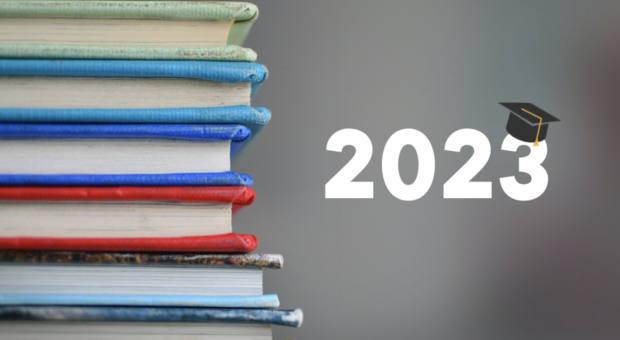
Now more than ever, the only constant is change. As higher ed marketers we navigate through these uncertain times and learn to adapt to unprecedented change. Some of that change is likely to have long-term impacts on higher ed marketing as we know it.
Marketing your higher education programs will need to change, but how? Here’s what we are anticipating will change post-COVID-19, and how you can prepare.
Anticipated Impacts of COVID-19 on Higher Education Marketing
1. Changes in Demand
High school students are faced with a tough decision right now. Many seniors are preparing to make, or have recently made, their final decisions on where to attend this fall semester. But with stay-in-place orders in effect in many states, the fate (and format) of fall semesters is still up in the air for many universities. Social distancing is causing some high school juniors to put off campus visits, and further delaying their decision-making. Not to mention financial uncertainties causing others to rethink returning to classes in the fall. Because of this uncertainty, expect more students to defer their decisions.
For undergrad programs, it will be important to speak to the value of a degree to curb some of the uncertainty. Your message to students should be tailored to their concerns and fit the format for delivery. In live sessions, allow prospective students to ask questions so they get the same personalized approach they would in person. Having current students join your live session will also allow students to get a feel for who their peers could be and a little about student life. Financial aid is also top of mind for this audience, so enabling your admissions team to connect with these student’s one-on-one will allow them to ask important questions to inform their decision. More generalized content such as your campus tour and curriculum overview can likely be pre-recorded.
In a better position are graduate studies, where you should expect higher demand. Typically, as the economy takes a downturn, professional and graduate studies tend to see an increase in interest. This is because people already in the workforce or set to graduate from undergrad tend to seek additional courses, certificates, or a master’s degree to further improve their skill set or make themselves more marketable to employers.
Another higher ed audience that tends to fare well during tough times are community colleges. Typically, the more affordable and convenient route to education, community colleges should promote their trade degrees and unique areas of study during this time to attract more students.
2. Interest in Programs
When we do finally come out on the other side of this pandemic, people themselves will be changed forever. COVID-19 has upended many people’s lives and made them face challenges or sorrows that change who they are as a person, and who they want to be in the future.
This drastic change is likely to have an impact on their aspirations, and consequently, their area of study. Many people view the doctors and nurses on the front lines, the systems architects protecting companies from the surge in cybersecurity threats, and the logistics managers ensuring goods get to grocery stores so people can eat, as heroes. Many of these industries were thriving before, but with recent events, expect to see an increased interest in programs in these areas from students in the near-term.
Student demand is good for enrollment marketers, but competition is not. Although more students are likely to want to study in these programs, it doesn’t mean the overall student pool is going to grow exponentially. Due to financial constraints and competing career paths (such as the trades), there will still be a lot of competition among schools vying for the same students. Earning your fair share (and then some) of the market is going to be more important now than ever.
A significant percentage of prospective students draw from their awareness of existing schools and rarely widen that consideration set when making a decision. Building your awareness now can lead to increased inquiries and applications down the road.
3. Engaging with Prospective Students
If you told me a few months ago that my 65-year-old mother (sorry, Mom) would be working from home and enjoying it, I would’ve said you’re crazy. That’s the new reality though. All ages are learning to adapt to working or learning remotely, and some are actually enjoying this new norm. With the capabilities of virtual learning and working suddenly experienced by so many, we suspect more people will be interested in distance learning than ever before.
Demand for online programs, especially in the graduate space has been growing over the years and the impact of COVID-19 is likely to accelerate that. Preparing to offer and promote your online programs will get you ahead of your competitors to earn that already tight student pool’s attention.
Another thing many people have learned through social distancing is that not all things need to be decided based on an in-person experience. Typical experiences such as shopping for paint or furniture have been historically an in-person decision, but companies like Sherwin Williams and Wayfair are making their no-contact, virtual experiences just as easy and valuable. What if choosing a higher education institution is the same?
Many schools are adding recorded virtual campus tours to their site and social pages, and hosting virtual live events on channels such as Facebook or video conferencing tools. This shift to virtual events is a necessity now but could be a benefit in the future. Added convenience is always better and meeting virtually can increase your speed to connect with prospective students during their research phase.
The Takeaway
At this time, it’s hard to tell exactly how COVID-19 will impact the higher education space as we are all still navigating through it. It is sure though that the students you speak to today will be different than those of the past. Tailoring your marketing efforts to a prospective student audience that has been changed forever by their COVID-19 experience will be the only way to achieve your enrollment goals in the future.
About VONT Performance Digital Marketing
At VONT we believe that change is the only constant in the digital world – and that excites us. Over the years, digital marketing has played an ever-growing role in higher education recruitment. From lead generation for inquiries, campus visits, and applications to increasing brand awareness and student yield – digital marketing and ongoing optimizations can have a significant impact on the objectives that confront today’s higher ed marketer.
We believe in this idea of continual fine-tuning so much that we named our company VONT, which means to achieve exponential improvement in incremental steps. It is our core belief, and the reason why we are not simply a web design company or simply a digital advertising agency, but rather a long-term, single source partner providing a comprehensive array of web development and digital marketing capabilities for higher education clients.
In short, we’re here so that our clients achieve success in the ever-changing digital world. If you’d like to learn more about VONT and the work we’ve done with our higher education clients, visit our Work page. Or, if you have a question, contact us. We’ll get right back to you!

